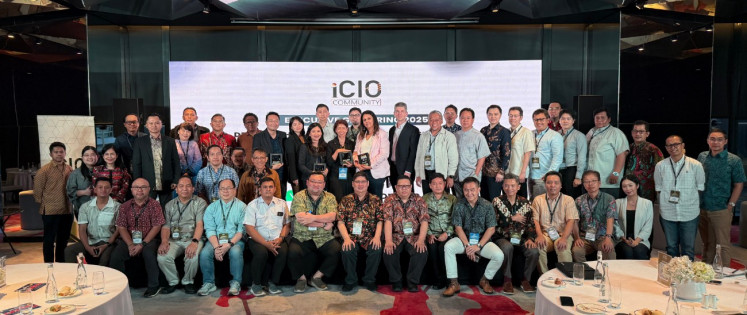Popular Reads
Top Results
Can't find what you're looking for?
View all search resultsPopular Reads
Top Results
Can't find what you're looking for?
View all search resultsBenQ: Experiences go beyond devices and locations
Change text size
Gift Premium Articles
to Anyone
W
ith the world still coping with the COVID-19 pandemic, the work-from-home mode has been making a big push. It is believed to remain preferable even after the pandemic is over due to its unprecedented advantages.
Companies with work-from-anywhere measures can boost employee productivity and lower operational costs, while employees enjoy perks like flexibility and the lack of a need to commute. It has become no longer necessary to be in an office full-time to be a productive member of the team.
To switch to a remote hybrid working setup, companies need to make sure they implement the required technology to drive employee productivity, such as hardware, software, internet and production tools.
Employees need a speedy and reliable internet connection in order to effectively collaborate with other remote workers.
In terms of applications, companies can opt to use readily available cloud-based software or install specialized apps on remote servers for easy access.
Centralized file handling is important, especially when working with teams. A cloud-based file repository allows employees to create, access and modify common work files remotely.
This is especially useful for turning over tasks. And since work data is passed on via the internet and is mostly accessed through the employees’ personal devices and personal networks, security becomes a very important consideration.
Perhaps the most important requirement for effective remote working are collaboration tools. These are a set of applications—both local and cloud-based—that employees can use to communicate and co-work with their teammates, stakeholders and customers.
The most common of these tools are instant messaging and video conferencing apps.
Instant messaging is used for on-the-fly communication, when employees need to send and receive responses instantly.
Video conferencing, on the other hand, involves more focused and fleshed out discussions. For video conferencing to be effective, employees must not only have the company-mandated apps installed on their devices, but they must also have good video and audio recording equipment.
Organizations looking into adopting a hybrid work setup can invest in displays like DuoBoard, which has built-in video conferencing features for in-person and remote meetings that are easy to schedule, host and join.
For SMBs or small office space, employees might consider the Wireless Smart Projector for its portable video conferencing solution.
Some interactive displays like the DuoBoard also offer the additional advantage of touchscreen for convenient whiteboarding.
For remote users, cloud whiteboarding takes it up a level because it allows for real-time discussions with an active visual component.
Cloud whiteboarding solutions such as EZWrite Live give meeting participants the freedom to video call, write, draw, or import multimedia on a shared screen—functionalities that other cloud-based word or number processing software don’t always offer.
Safeguards for regulated work
The challenge with having multiple workers spread out across different locations is that companies cannot guarantee that employees are adhering to company standards for work.
When employees are left to their own devices, it becomes a matter of trust. As a precaution, organizations must set guidelines that govern remote work to ensure employee accountability and continued productivity.
These may cover topics such as work hours, status updates, and expected deliverables. Organizations must also have emergency measures in place like functional call trees to ensure that work gets passed on quickly in case one or more employees become unavailable.
A progress tracking system is essential for any kind of work since it lets teams know how much more needs to be done to complete a project.
It ensures that employees are always on track and that managers are able to spot possible bottlenecks so they can adjust the process accordingly.
Progress tracking for remote work also gives employers a chance to fairly assess their employees’ contributions based on their output.
To keep teams on the same page, it is most important to schedule regular sync up meetings via video conferencing.
This not only allows them to discuss the status of their work, but it also gives them a chance to foster better relationships with their remote coworkers.
A remote working setup can be deemed successful if teams get to collaborate and produce work efficiently and securely.
BenQ displays for corporate environments enable team collaborations and creativity. Our products help companies overcome time and location restriction and work together despite changing conditions. Cloud whiteboarding, wireless sharing and high quality video conferencing enhance hybrid working, meaning “Bring Your Own Device” (BYOD) works great every time.
BenQ offers easy-to-use solutions that fuse hardware and software seamlessly for your teammates at office or home.
BenQ products offer designs that cater to a highly dynamic and mobile work culture. Device interconnectivity, platform compatibility, and experience portability all create a collaborative ecosystem that greatly improves your productivity.
For more information https://bit.ly/36Xd0jI










